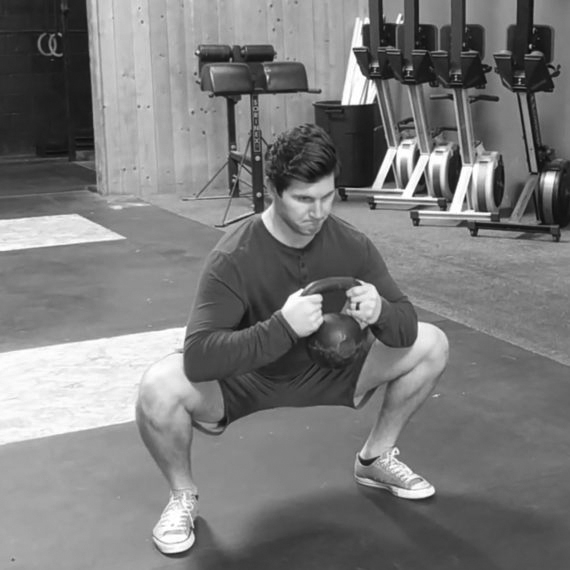The Infamous Squat
The squat is commonly coined the king of exercises in the gym. Some people love the squat, while others despise it, but few would argue with the importance of the squat.
While it is a movement you will see across any gym, CrossFit box, or group class, it’s not as simple of a movement as we assume. We see many people use the squat as a warmup for other exercises, yet there is so much complexity to the movement that many people cannot jump right into performing it.
While we all should have the ability to perform the squat cold and without warming up, our increased time spent sitting has contributed to less mobility and less strength through these ranges of motion.
The squat requires full ability to flex your ankles, your knees, your hips, all while staying strong and connected throughout your entire body. It’s no wonder many people complain of knee and lower back pain with their squats.
While pain is a sign that there is something more going on that needs to be addressed, there are times when simply upgrading your warmup can be enough to fix common complaints of pain and tightness that we see athletes for daily.
Watch below for some of our favorite exercises to incorporate into your warmup prior to your next squat session. This does not take into account individual variations in your mobility and areas that need to be addressed, so feel free to choose the ones that provide the most benefit or simply include them all.
As a rule of thumb, we recommend running through each of these in superset format (perform the first exercise, then the second, etc) and then repeating each exercise two times through.
5 Exercises to Warmup Your Squat
Ankle Dorsiflexion Mobility with Kettlebell
If your ankles cannot fully dorsiflex (the motion of pulling your toes towards your shin), your squat, your performance, and your knees and lower back will suffer over time. Use this kettlebell mobilization to open up your ankles and get yourself ready to squat. Perform 5 x 5 second holds on each side.
90/90 Hip Mobility
Similar to the ankles, having full hip mobility is essential for proper movement in the squat. This is especially true as it relates to the bottom position. This is a catch all hip mobility movement that improves your hip mobility while also working your hip and core stabilizers simultaneously. Perform 30 seconds towards the front leg and 30 seconds towards the back leg.
Supine Squat Hip Flexor March
While the hip flexors are commonly stretched (and overstretched), they are often in need of some strengthening. By strengthening and activating your hip flexors prior to squatting, you will be able to ‘pull’ yourself into a stronger bottom position with a more upright upper body position. This is especially important when we get into front squats and overhead squats. Perform 10 times on each leg with a light resistance band.
Step Up to High Knee
Now that we’ve opened up some mobility in key areas, it’s time to start grooving the squatting pattern. We love step ups for many reasons, and we’d argue they are a great standalone exercise for many people that have trouble squatting. In this case, we’re using them in the warmup to help supercharge your next squat workout. Don’t rush through this movement, make sure you are starting off in a good position on each rep. Perform 5-10 reps per leg on a lower box or stack of plates.
Prying Goblet Squat
To tie it all together, we’re finishing with a goblet squat. This helps to clean up any last areas of sticking points in mobility, while also firing up your core and your hips to get you ready to move some weight in an efficient way. Spend 30 seconds in the bottom position. This should not be a ‘passive’ rest in the bottom, but an ‘active’ use of all your muscles as you keep your chest up and knees pushed out.
Give this a try before your next squat day and let us know if you feel a difference. This is worked with hundreds of clients that we have worked with both locally at our performance physical therapy clinic as well as with online training athletes that we program for.
More Questions?
Shoot us an email at [email protected] or reach out to us on Instagram @iostrengthperformanceto let us know if this was helpful.
If you’ve been dealing with pain or tightness that is keeping you from feeling and performing your best with your workouts, contact us today. Whatever your goals or wherever you’re at, you can schedule a free 15 minute phone consult with one of our Performance Docs to talk through your goals and help guide you to your next best step. Don’t wait to feel and perform your best.

